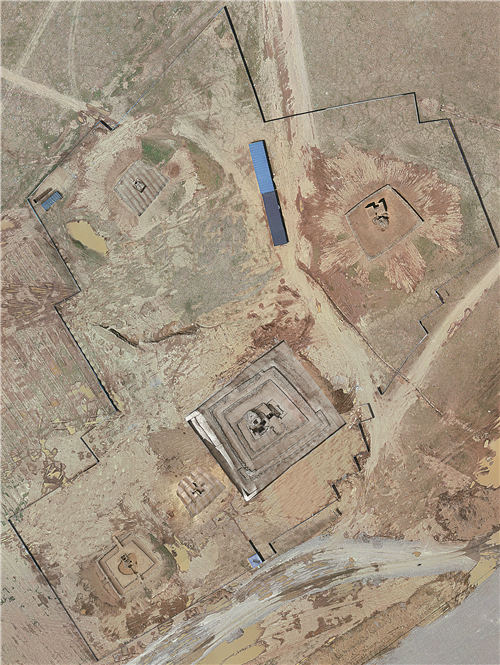Ancient discoveries shed light on Tibet's past
By WANG KAIHAO in Beijing and PALDEN NYIMA in Lhasa | China Daily | Updated: 2022-01-28 08:48

Decoding unwritten past
Although Tubo stood out as being exceptional in the early documented history of the region, Huo, the Sichuan University professor, stressed that a much longer "unwritten" past existed before these flourishing times.
"Archaeology is writing that part of history that no one has done before," he said.
In the past two years, rich archaeological discoveries have been made across Tibet, shedding light on its prehistoric period and much earlier links with the rest of China than originally thought.
In Ngari prefecture, in the west of the autonomous region, more than 5,000 relics, including numerous stone items, were unearthed in 2020 at the Jerak site, dating back 8,000 to 10,000 years and indicating two separate periods of human settlement. No archaeological evidence from this time had previously been found in the hinterland of the Qinghai-Tibet Plateau.
Despite the discovered stone tools being small-some broken pieces are only a few millimeters thick-for archaeologists such as Gao Xing they are key indicators of human migration.
Gao, a researcher at the Institute of Vertebrate Paleontology and Paleoanthropology affiliated to the Chinese Academy of Sciences, said: "They show close links with findings in North China, and may offer crucial information for studying the origins of Tibetan people. They echo some findings from genetic studies."
The evolving styles of the stone tools also show how residents on the plateau adapted to the environment in this high-altitude area in ancient times, Gao said.
Meanwhile, Shargan Wangdue and other archaeologists excavated 10 tombs in Tibet in 2020 and last year, along with the 4,000-year-old Mabutso Lake site in Khangmar county, Shigatse, to the south of Lhasa.
Some pottery from the tombs is made in the same style as counterparts found in the Hengduan Mountains in Sichuan and Yunnan provinces, nearly 2,000 kilometers away.
At the Gadpaserul site in Ngari, a graveyard dating back 3,000 to 3,600 years is evidence of an economy reliant on herding and hunting and also indicates close connections with similar graves in Xinjiang Uygur autonomous region.
Song Xinchao, deputy director of the National Cultural Heritage Administration, said during the online conference: "Now we need to view archaeological findings in Tibet from a much wider perspective and evaluate them in comprehensive studies involving other regions. This is not only about neighboring provinces, but goes beyond national borders. The significance of this should be viewed in the context of the whole of Asia."
He added that archaeology can greatly contribute to interdisciplinary research on the Qinghai-Tibet Plateau, together with environmental sciences, geology and anthropology, among others.























